Parsley is more than just a garnish—it’s a versatile herb packed with nutrients, flavor, and medicinal benefits. Whether you’re an avid gardener or a beginner, parsley is a fantastic plant to grow at home because it’s hardy, low-maintenance, and incredibly rewarding. From enhancing soups and salads to boosting your daily vitamin intake, parsley is a plant you’ll want thriving in your garden or kitchen.
In this guide, we’ll explore everything you need to know about how to grow parsley and keep it flourishing—from planting to harvesting, and even troubleshooting common problems.
Why Grow Parsley?
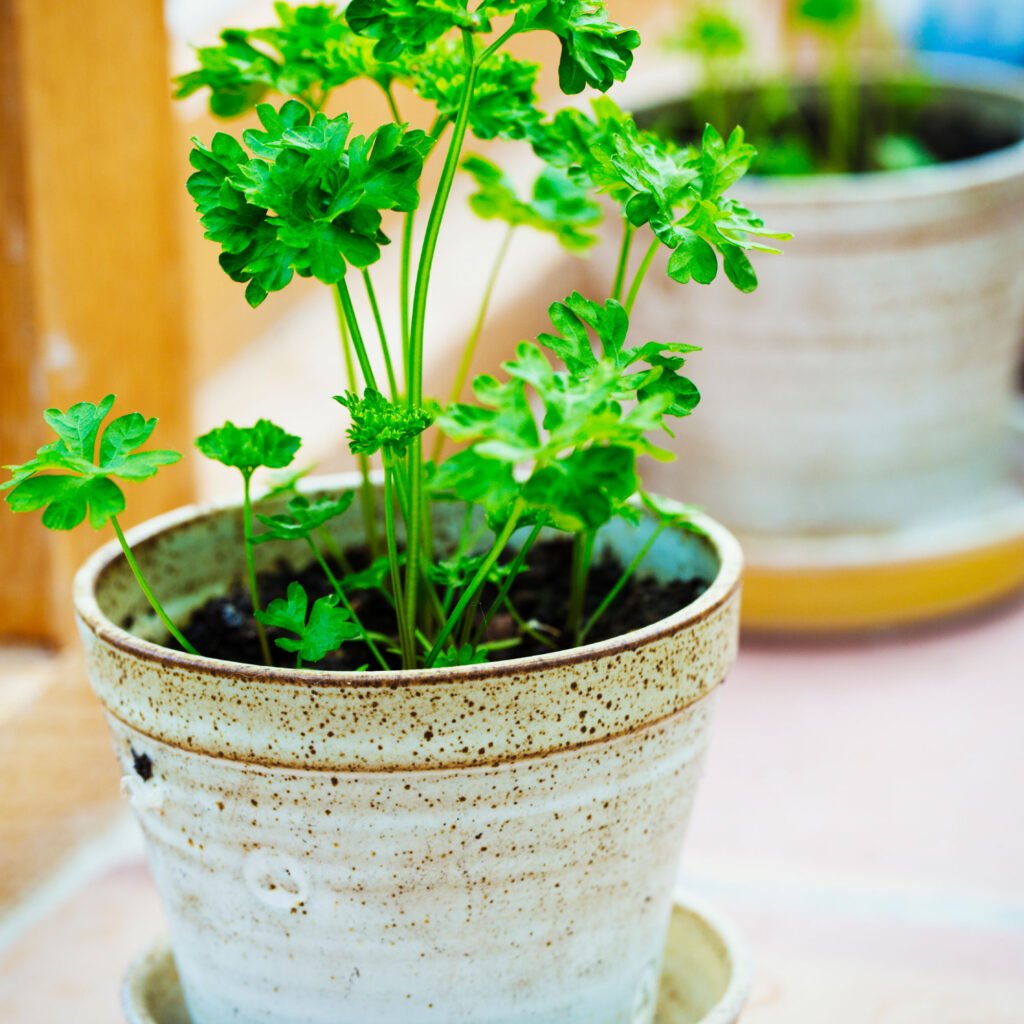
Before diving into the how-to, let’s look at why parsley deserves a spot in your garden or windowsill:
- Nutrient-rich – Packed with vitamins A, C, and K, along with antioxidants and minerals.
- Culinary staple – Essential for flavoring soups, sauces, salads, and many dishes worldwide.
- Medicinal benefits – Known for its anti-inflammatory and detoxifying properties.
- Easy to grow – Tolerates a variety of conditions and is perfect for both indoor and outdoor gardens.
- Dual use – Leaves are edible, and the roots (in some varieties) can also be consumed.
Choosing the Right Type of Parsley
There are two main types of parsley to consider:
- Curly Leaf Parsley (Petroselinum crispum var. crispum)
- Known for its ruffled, decorative leaves.
- Commonly used as a garnish but still flavorful.
- Flat Leaf Parsley (Italian Parsley, Petroselinum crispum var. neapolitanum)
- Has flat, broad leaves with a stronger, more robust flavor.
- Preferred for cooking due to its intense aroma.
Both types grow well under similar conditions, so the choice comes down to personal taste and intended use.
Where to Grow Parsley
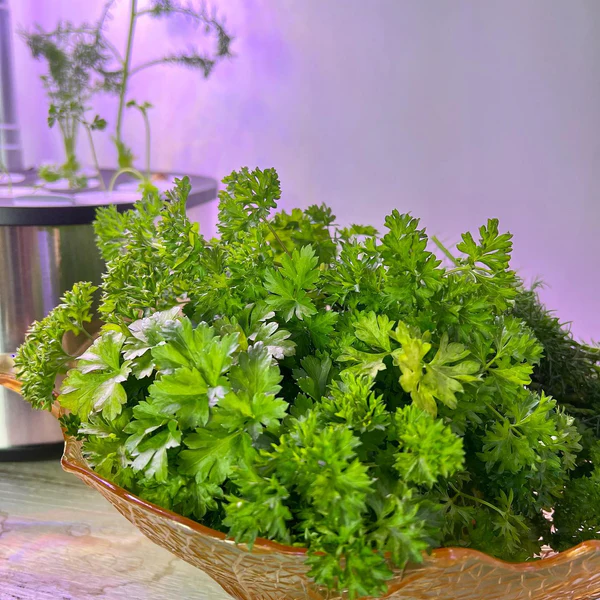
Parsley can thrive in different environments:
- Outdoor gardens – Ideal for those with space in flower beds, herb gardens, or vegetable patches.
- Containers and pots – Perfect for balconies, patios, or small spaces.
- Indoor herb gardens – Parsley grows well on sunny windowsills or under grow lights.
Planting Parsley
1. Starting from Seeds
Parsley seeds can be a little slow to germinate, often taking 2–4 weeks. To boost germination:
- Soak seeds in warm water overnight before planting.
- Plant seeds about ¼ inch deep in moist, well-drained soil.
- Space seeds 6–8 inches apart (or thin seedlings later).
2. Starting from Transplants
If you want quicker results, purchase parsley seedlings from a nursery. Transplants establish faster and reduce the waiting time for harvest.
Ideal Growing Conditions
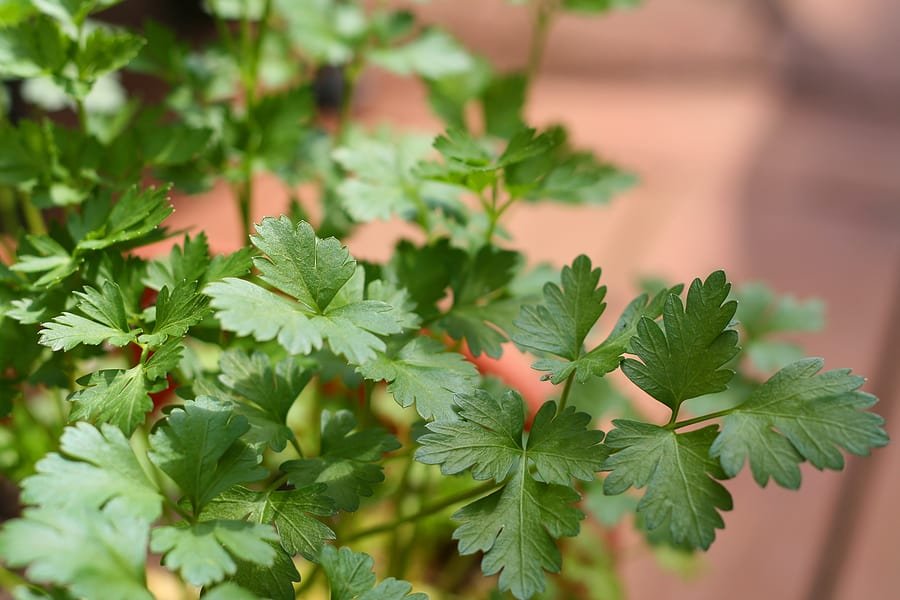
To ensure parsley thrives, provide the following:
- Sunlight: Parsley grows best in full sun to partial shade. Aim for at least 6 hours of sunlight daily.
- Soil: Prefers loamy, well-draining soil with a pH between 6.0 and 7.0.
- Watering: Keep soil consistently moist but not waterlogged. Parsley hates drying out completely.
- Temperature: Grows well in cool to moderate temperatures (50–70°F / 10–21°C). It tolerates mild frost but may struggle in intense heat.
Caring for Your Parsley Plant
Growing parsley doesn’t end at planting. Proper care ensures it keeps producing lush, green leaves.
1. Watering
- Water deeply 2–3 times per week depending on weather conditions.
- Avoid letting soil dry out completely. Mulching around the plant helps retain moisture.
2. Fertilizing
- Parsley is not a heavy feeder but benefits from occasional feeding.
- Use a balanced liquid fertilizer every 4–6 weeks.
- Organic compost or worm castings also boost soil nutrients naturally.
3. Thinning and Spacing
- Thin seedlings to about 8–10 inches apart for optimal airflow.
- Proper spacing prevents overcrowding and reduces disease risks.
4. Pruning
- Regularly snip outer stems to encourage new growth.
- Avoid cutting the inner stems (growth center), as this can stunt the plant.
Harvesting Parsley
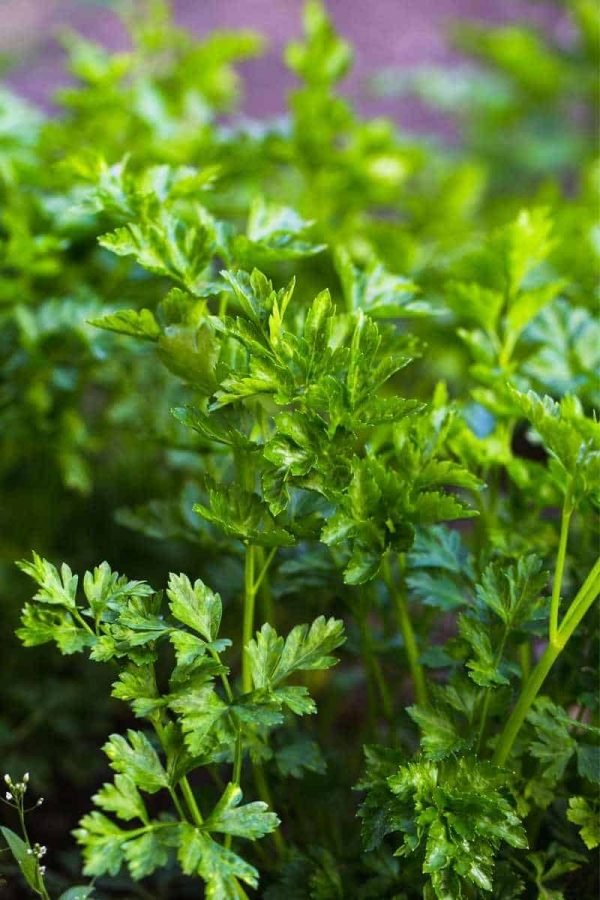
Parsley can be harvested once it has several mature leaves, usually 2–3 months after planting.
- Always cut stems at the base, starting with the outermost ones.
- Frequent harvesting encourages bushier growth.
- You can harvest parsley continuously throughout the growing season.
Storing Parsley
- Fresh use: Store in the fridge wrapped in a damp paper towel.
- Drying: Hang bunches upside down in a dry, airy spot.
- Freezing: Chop and freeze in ice cube trays with a little water or oil for long-term use.
Keeping Parsley Thriving Year-Round
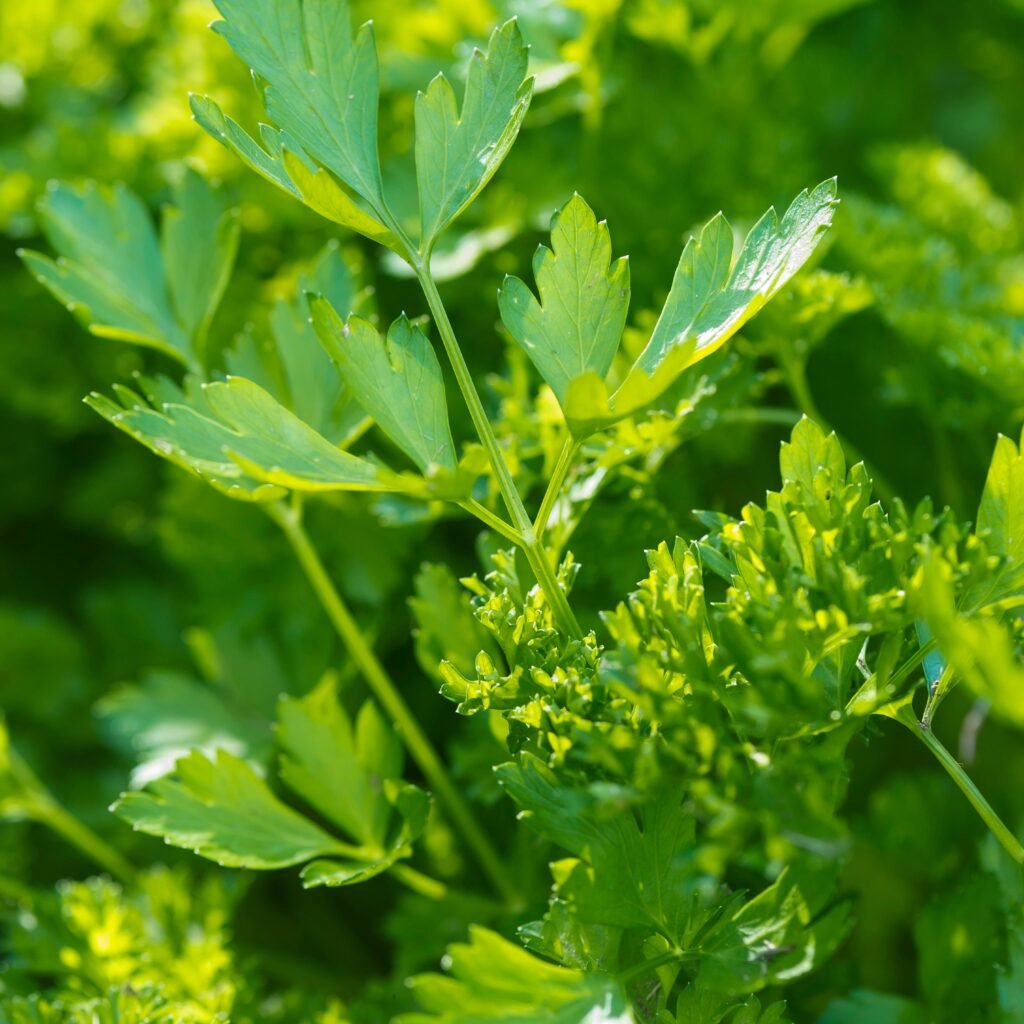
Parsley is a biennial plant—it completes its life cycle over two years. In the first year, it produces leaves, and in the second, it flowers and sets seed. After flowering, the leaves lose flavor.
To keep parsley thriving year-round:
- Succession planting: Sow new seeds every 3–4 months for continuous harvests.
- Winter protection: In colder climates, cover outdoor plants with mulch or bring potted parsley indoors.
- Indoor growing: Grow parsley in containers under grow lights during the off-season.
Common Pests and Diseases
Like most herbs, parsley is relatively hardy but can face a few issues:
Pests
- Aphids – Small insects sucking plant sap. Control with insecticidal soap or water spray.
- Caterpillars (Swallowtail larvae) – They eat leaves but can be hand-picked.
- Spider mites – Thrive in dry conditions; mist plants regularly to deter them.
Diseases
- Powdery mildew – White powdery spots on leaves; improve airflow and avoid overhead watering.
- Leaf spot – Yellow or brown spots caused by fungi; remove infected leaves and use organic fungicides.
- Root rot – Caused by waterlogged soil; ensure proper drainage.
Companion Planting for Parsley
Parsley grows well alongside other plants, boosting garden productivity:
- Good companions: Tomatoes, carrots, onions, roses (improves fragrance), and asparagus.
- Avoid planting near: Lettuce and mint (compete for nutrients).
Culinary and Health Uses of Parsley
Parsley isn’t just an ornamental herb—it’s a powerhouse in the kitchen and medicine cabinet.
Culinary Uses
- Fresh garnish for soups, stews, and roasted meats.
- Key ingredient in tabbouleh, chimichurri, and gremolata.
- Enhances salad dressings, marinades, and pasta dishes.
Health Benefits
- Rich in vitamins A, C, and K, promoting eye, bone, and immune health.
- Contains antioxidants that fight free radicals.
- Acts as a natural diuretic, supporting kidney health.
- Freshens breath naturally.
Troubleshooting Common Problems
- Parsley turning yellow – Often due to overwatering, poor drainage, or nutrient deficiency.
- Leggy growth – Caused by insufficient sunlight. Move to a sunnier location.
- Slow growth – Parsley is naturally slow-growing, but lack of nutrients or compacted soil can worsen it. Add compost and loosen the soil.
Final Thoughts
Parsley may be modest compared to flashy herbs like basil or mint, but it is one of the most rewarding plants to grow. With proper planting, consistent watering, and regular harvesting, you can enjoy fresh parsley all year long. Whether in garden beds, pots on a balcony, or a sunny windowsill, parsley adapts beautifully to different spaces and conditions.
By following these steps, you’ll not only know how to grow parsley but also how to keep it thriving season after season—ensuring a steady supply of fresh, flavorful, and nutrient-rich leaves for your kitchen and beyond.





Leave A Comment